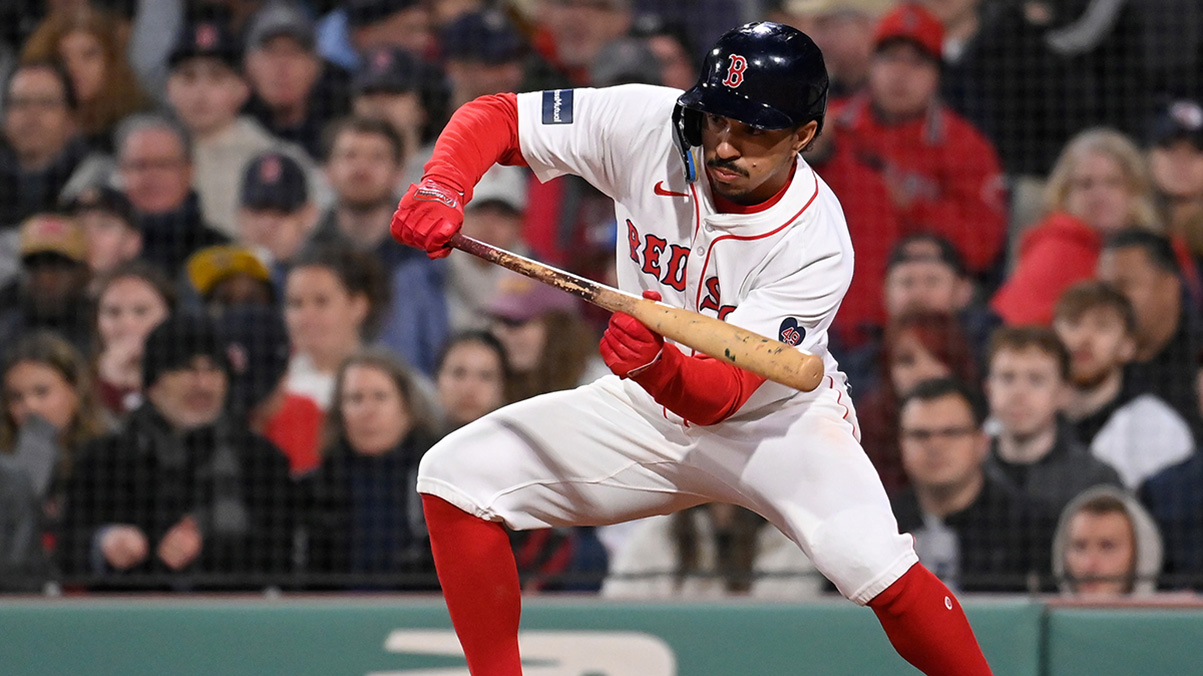
Given their struggles at the plate for most of the 2015 season, it may surprise you to learn that the Red Sox finished fourth among all 30 major-league teams in runs scored.
In all of baseball, only the Toronto Blue Jays (891), New York Yankees (764) and Texas Rangers (751) scored more runs than the Red Sox (748).
That seems implausible, given how mightily the Sox struggled in the first four months of the season. With David Ortiz mired in a slow start and unable to do much against left-handed pitchers, the Red Sox batting order lacked its usual middle-of-the-lineup force.
Worse, Hanley Ramirez's production nosedived after a strong first month, Pablo Sandoval stopped switch-hitting (and was inept against lefties), Shane Victorino battled injuries, Mike Napoli was mired in a slump, and, from early May through the end of June, the catching tandem featured a mix of an overmatched rookie (Blake Swihart) and an offensively challenged journeyman (Sandy Leon).
Over the final two months, however, the offense shifted into gear. Ortiz's bat came alive. Travis Shaw injected some lefty pop. Mookie Betts went on a tear. And Swihart figured some things out at the plate.
The result? The Red Sox, though far out of contention, showed improved starting pitching and better offensive production, yielding a strong seven weeks.
After posting a slash line of .256/.319/.392 through the end of July, the Red Sox came alive offensively in the final two months, with a line of .281/.338/.453.
Boston Red Sox
It was as if the split represented two different teams, which, in a sense, was true -- right down to the manager, with bench coach Torey Lovullo taking over from John Farrell, who was diagnosed with Stage 1 non-Hodgkin’s Burkitt lymphoma, in the middle of August through the remainder of the schedule.
The question for 2016: Which offense will this year's team resemble? The inept bunch from the first four months? Or the more powerful group showcased in the season's final two months?
Among the projected position players, there are no newcomers. Indeed, among those projected to open the season on the major-league roster, only Chris Young wasn't here on the first weekend of last October -- and he's only slated to be a depth outfielder.
Let's start with the returning veterans: Ortiz, Ramirez, Sandoval and Dustin Pedroia.
As established major-leaguers - and all but Ortiz more or less within their chronological prime -- it should be relatively easy to predict their production. But extenuating cirumcstances impact all four.
-- Pedroia was on his way to his strongest offensive season in a number of years, with 9 homers in 69 games and an OPS of .819. But a serious hamstring pull knocked him out of the lineup in June, and he played just 24 games in the second half.
It's impossible to know whether Pedroia can get through a full year without being injured, since each of the last three seasons were compromised by physical challenges.
Last year's first half indicated that Pedroia can still be a dynamic offensive player. The question, however, remains: For how many games?
-- Ramirez started the season well, hitting 10 homers in April and compiling a .999 OPS.
But a collision with an outfield wall in the first week of May sent Ramirez into a downward spiral at the plate. From the start of May through June 18, he hit exactly one homer. And after that injury healed, Ramirez dealt with problems to his other shoulder.
The result? A slash line of .238/.277/.367 from May 1 until his final at-bat of the season on Aug. 26.
In theory, Ramirez should rebound in 2016. He's just 32 and only three years removed from a season in which he posted a 1.040 OPS. But as with almost anything to do with quixotic Ramirez, it's hard to know for certain.
-- Sandoval's first season in Boston was every bit as disappointing as Ramirez's. In some ways -- offensively, at least - it was worse. If Ramirez's .367 post-May slugging percentage was mystifying, what are we to make of the fact that Sandoval had a .366 slugging percentage for the entire season?
He finished with a career-low 10 homers and contributed just 25 doubles. In short, Sandoval failed to regularly drive the ball.
Part of that might be attributed to conditioning -- were it not for the fact that that has been a problem for the portly third baseman for much of his career.
Another issue was his struggles from the right side of the plate, and against lefty pitching in general. Sandoval gave up switch-hitting in the last week of May after starting the season 2-for-41 from the right side.
In time, things got a little better for Sandoval while hitting left-handed against lefty pitching, but he still finished with a putrid .197 average against left-handers for the season.
It's possible Sandoval will be a better offensive player in his second season, having had a year to adjust to a new league, new pitchers and new ballparks. But it's hardly assured.
-- Ortiz finished with a .913 OPS and belted 37 homers, his highest total since 54 in 2006.
But for the first three months, Ortiz struggled mightily, unable to do much damage at all against lefties and generally having an inconsistent plate approach. In time, he figured some things out and was a menace in the second half. But Ortiz will start this season at 40, and if he begins slowly this time -- as he did a year ago and in 2010 and 2011 -- there's no guarantee that he can correct things and reverse course.
It's astonishing that Ortiz performed at such a high level at age 39. But expecting him to follow that up at 40 may be asking too much.
If there are two players the Red Sox needn't worry about, they should be Xander Bogaerts and Mookie Betts. At 23, they're not yet in their prime and expected to make further gains.
It's assumed that Bogaerts, who was limited to just seven homers a year ago, will develop more power. Similarly, Betts hopes for more consistency, avoiding the kind of prolonged slumps that twice derailed him somewhat last season, his first full year in the big leagues.
But uncertainty surrounds two other everyday players - outfielders Jackie Bradley Jr. and Rusney Castillo.
Through the first week of August, Bradley spent the majority of the season in Triple-A. When he occasionally got an opportunity to play because of injury or performance issues for others in Boston, hit just .121.
But given a chance to play more regularly after the trade of Victorino, Bradley exploded. In one incredible stretch lasting a month, Bradley hit .446 with a .489 OBP and a .952 slugging percentage.
He hardly seemed like the same player who hit a mere .198 the year before -- or even the one who struggled in the first four months.
Did Bradley stumble upon some magic key in August? Was this an indication of what he was capable of as a hitter?
Those questions grew when he slumped again, hitting just .138 from Sept. 8 until the end of the season.
If Bradley remains an enigma, Castillo is completely unknown, having played 90 major-league games in two seasons.
He's been both inconsistent and injury prone, and few know what to expect of him in 2016.
But Bradley's defensive brilliance and Castillo's inviting athleticism have led the Red Sox to invest them in fully this year -- even if it represents a significant gamble.
"You have to give him that opportunity at some time,'' said President of Baseball Operations Dave Dombrowski recently, "and it's about ready to give to give it to him based upon where he is. He's an all-around player, so we're in a situation where he's going to get the opportunity.''
What he and Bradley do with that chance and what the Red Sox get from the four veterans (Sandoval, Ortiz, Ramirez and Pedroia) will determine whether the uptick shown in August and September was a mirage -- or a sign of things to come.


